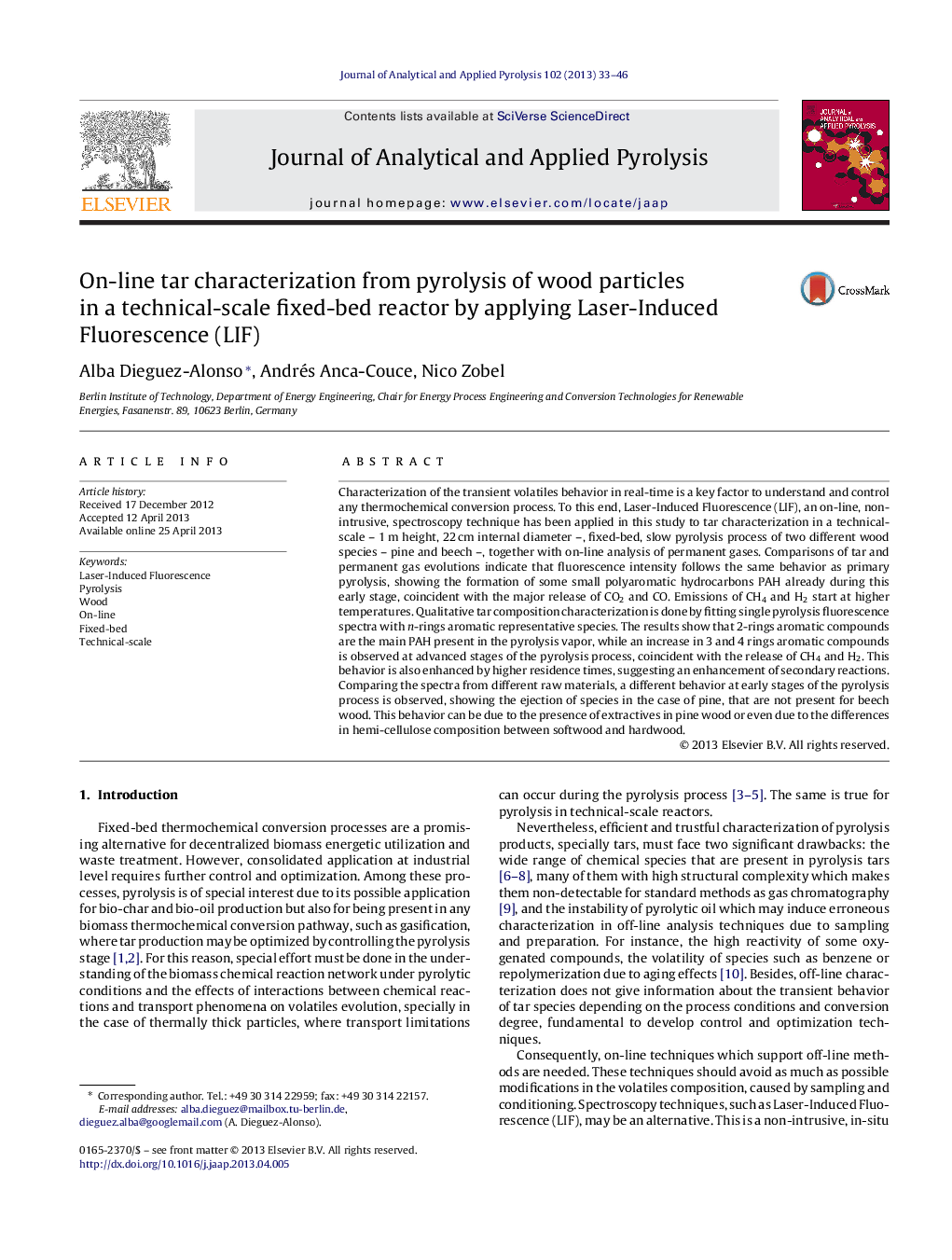| Article ID | Journal | Published Year | Pages | File Type |
|---|---|---|---|---|
| 1196885 | Journal of Analytical and Applied Pyrolysis | 2013 | 14 Pages |
•Fluorescence spectroscopy is applied to tar on-line characterization in a pyrolysis process.•A technical-scale fixed-bed reactor, with beds in the range of kg, is used.•Tar qualitative characterization shows that 2-rings aromatic compounds are the main PAH.•It is observed that some PAHs may be ejected during primary pyrolysis.•An increase in 3 and 4 rings aromatic compounds may be a hint of secondary reactions enhancement.
Characterization of the transient volatiles behavior in real-time is a key factor to understand and control any thermochemical conversion process. To this end, Laser-Induced Fluorescence (LIF), an on-line, non-intrusive, spectroscopy technique has been applied in this study to tar characterization in a technical-scale – 1 m height, 22 cm internal diameter –, fixed-bed, slow pyrolysis process of two different wood species – pine and beech –, together with on-line analysis of permanent gases. Comparisons of tar and permanent gas evolutions indicate that fluorescence intensity follows the same behavior as primary pyrolysis, showing the formation of some small polyaromatic hydrocarbons PAH already during this early stage, coincident with the major release of CO2 and CO. Emissions of CH4 and H2 start at higher temperatures. Qualitative tar composition characterization is done by fitting single pyrolysis fluorescence spectra with n-rings aromatic representative species. The results show that 2-rings aromatic compounds are the main PAH present in the pyrolysis vapor, while an increase in 3 and 4 rings aromatic compounds is observed at advanced stages of the pyrolysis process, coincident with the release of CH4 and H2. This behavior is also enhanced by higher residence times, suggesting an enhancement of secondary reactions. Comparing the spectra from different raw materials, a different behavior at early stages of the pyrolysis process is observed, showing the ejection of species in the case of pine, that are not present for beech wood. This behavior can be due to the presence of extractives in pine wood or even due to the differences in hemi-cellulose composition between softwood and hardwood.
